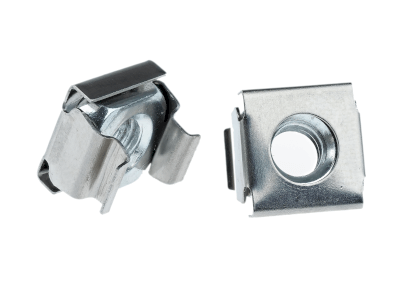What Is a Gauge Nut?
 A gauge nut, commonly used in server and telecommunications equipment, facilitates the attachment of these devices to rack mounting rails. These nuts are designed for racks with square holes and allow for the use of different screw sizes by switching the cage nut size. Installation typically requires a special tool or a flat-blade screwdriver.
A gauge nut, commonly used in server and telecommunications equipment, facilitates the attachment of these devices to rack mounting rails. These nuts are designed for racks with square holes and allow for the use of different screw sizes by switching the cage nut size. Installation typically requires a special tool or a flat-blade screwdriver.
Uses of Gauge Nuts
Gauge nuts are crucial for installing equipment on 19-inch server racks, which lack inherent screw mounts. By inserting the tabs of the nut into the rack’s square holes, customizable screw holes are created to accommodate various pitches and screw diameters. Though specialized tools are available for installing these nuts, a flat-blade screwdriver can also be used with caution to avoid dropping the nut or causing injury.
Principles of Gauge Nuts
Gauge nuts are designed to adapt to different screw diameters, mainly 5 mm and 6 mm, used in 19-inch rack systems with square holes. These systems, standardized by the Electronic Industries Alliance (EIA), feature racks with square frames that include claws for fixing nuts and female screw holders for fastening devices. The height of the nuts varies to match the thickness of the base material.
In use, the claws on the nut’s surface are hooked into the rack’s square holes (9.6 x 9.6 mm) using a special tool or screwdriver, securing it in place. The screws used in conjunction with gauge nuts, typically M5 and M6 in nominal diameter, should be appropriately matched to the nut size.